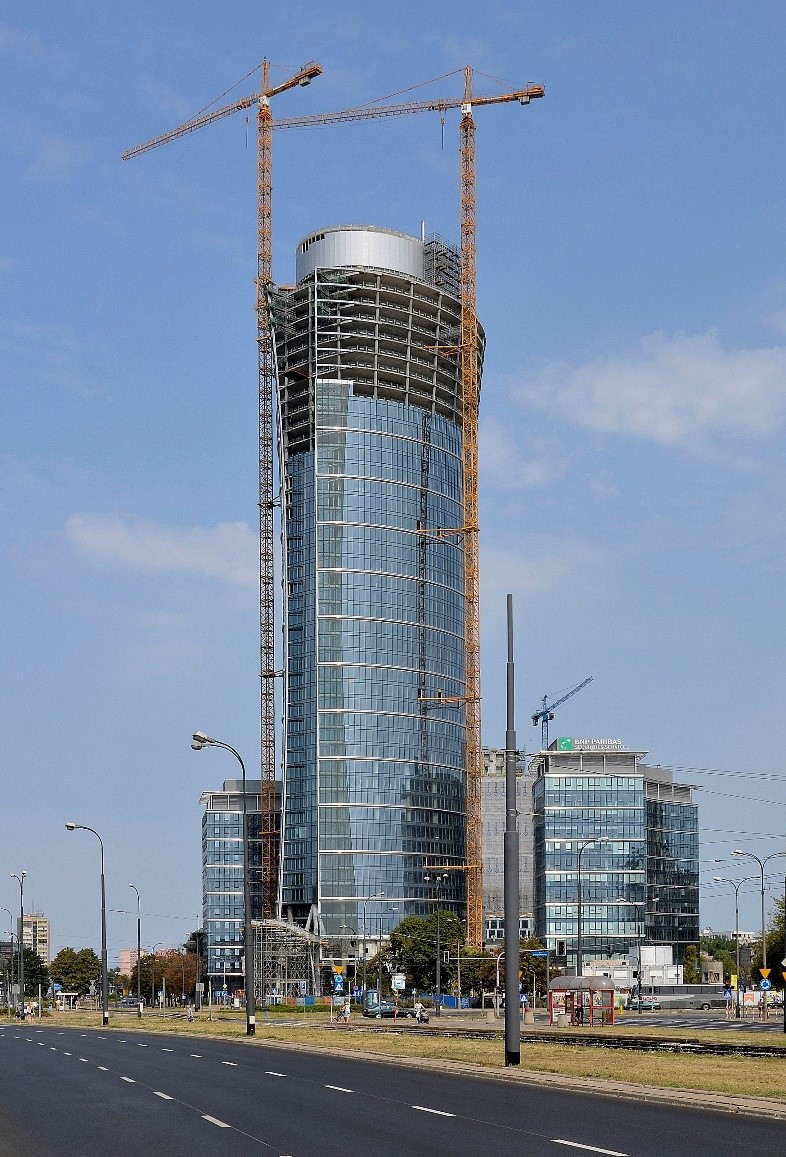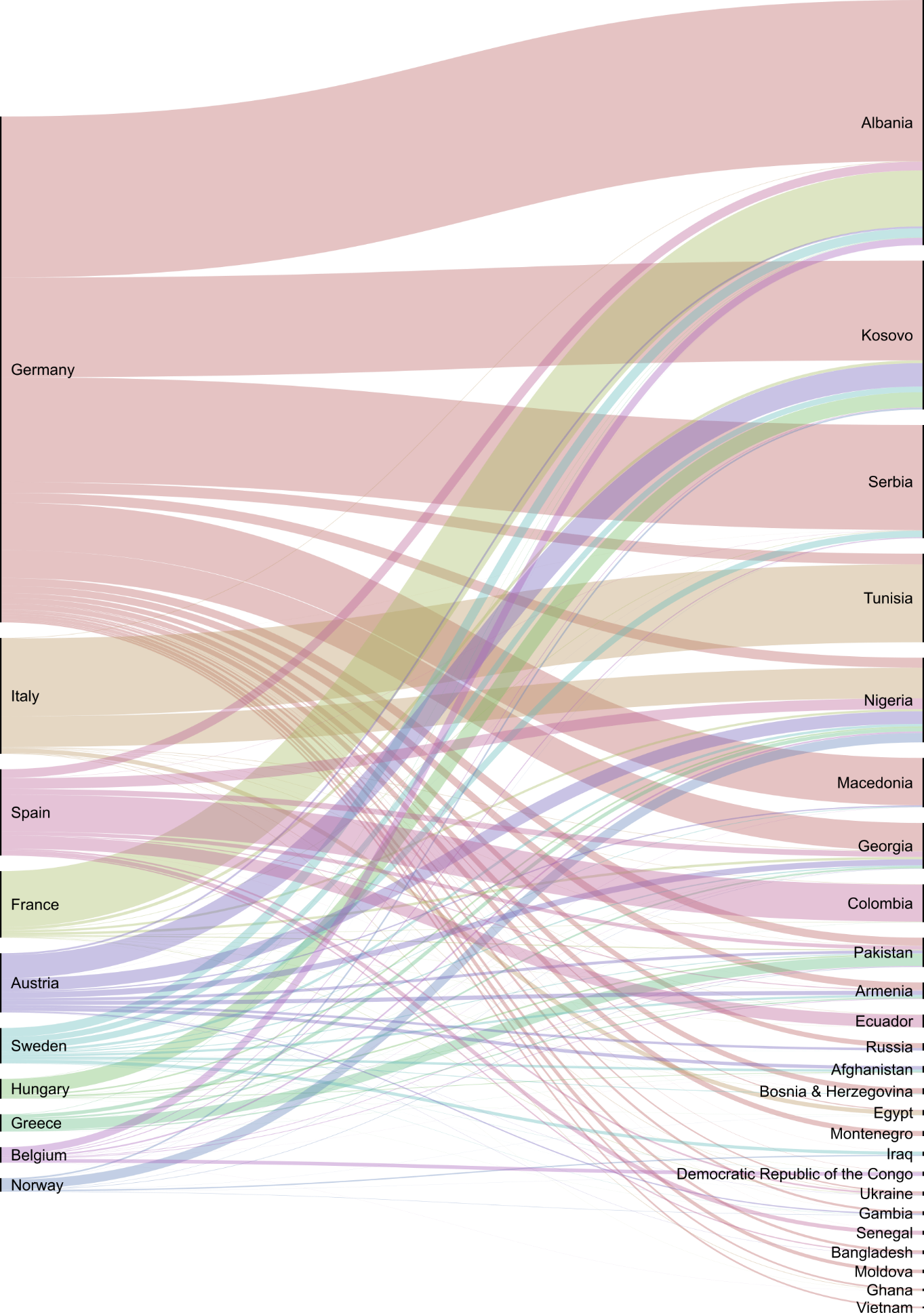Frontex: the EU’s ‘deportation machine’
 Since its establishment in 2004, Frontex has been granted an increasingly prominent role in coordinating and organising deportations from the EU’s member states. In 2006 the agency coordinated one Joint Return Operation (JRO) which removed eight people from Austria, France and Poland to Armenia and Georgia. Just over a decade later, in 2017, the agency coordinated 153 JROs removing a total of almost 7,500 people to destinations including Bosnia & Herzegovina, Colombia, Gambia, Kyrgyzstan, Nigeria, Pakistan, Sudan and Ukraine (the chart on the following page shows the principal destinations for the agency’s removal operations between 2007 and 2018). With the recent reform of the agency’s legal basis and proposals for a massive budget increase in the 2021-27 period, the intention is for its role in forced removals to increase significantly.
Since its establishment in 2004, Frontex has been granted an increasingly prominent role in coordinating and organising deportations from the EU’s member states. In 2006 the agency coordinated one Joint Return Operation (JRO) which removed eight people from Austria, France and Poland to Armenia and Georgia. Just over a decade later, in 2017, the agency coordinated 153 JROs removing a total of almost 7,500 people to destinations including Bosnia & Herzegovina, Colombia, Gambia, Kyrgyzstan, Nigeria, Pakistan, Sudan and Ukraine (the chart on the following page shows the principal destinations for the agency’s removal operations between 2007 and 2018). With the recent reform of the agency’s legal basis and proposals for a massive budget increase in the 2021-27 period, the intention is for its role in forced removals to increase significantly.
Frontex has long been the subject of critical attention, in particular from social movements and civil society organisations who have tracked the agency’s operations and activities and condemned its role in the development of ‘Fortress Europe’. Concerns have often focused around the agency’s legal and political accountability (or lack thereof) for its potential involvement in human rights violations. It is also evident that the agency has frequently sought to expand its role beyond existing legal boundaries.
The most recent reform of the legislation governing Frontex has introduced some extended accountability mechanisms. However, given the scale of the expansion of the agency’s role in border control operations, surveillance, risk analysis and deportations, and the risks these carry for fundamental rights, these safeguards appear insufficient.
This section provides an overview of the different types of removal operation coordinated by Frontex, the financial costs associated with them and the considerable increase in the number of these operations that has taken place over the last decade, but in particular in the last three years. It goes on to look at the legal changes that have underpinned the increase in expulsion operations and some of the most significant developments introduced by the 2019 Regulation. Finally, it examines the risks for fundamental rights associated with forced removals and relevant accountability and oversight mechanisms.

Figure 2: Principal EU member states conducting deportations with Frontex assistance and principal destination countries, 2009-18.
Spotted an error? If you've spotted a problem with this page, just click once to let us know.